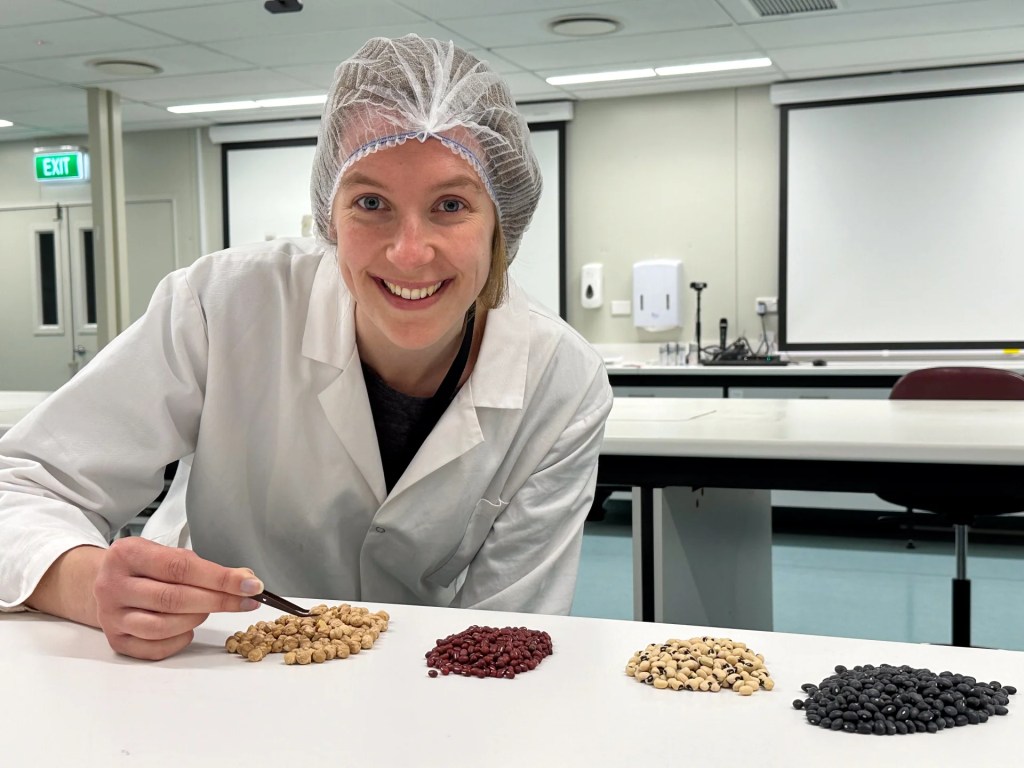A new Riddet Institute study proposes integrating pulses into other common foods can overcome the taste and texture issues associated with the high-nutrient plant protein.
Whilst legumes are a potent source of plant-based protein, the preparation required along with their flavour and mouthfeel has hindered their acceptance as a viable alternative to traditional proteins such as meat and dairy.
The Riddet Institute-affiliated scientist team – led by Professor Indrawati Oey and Dr Kevin Sutton – published their findings last month in the journal Trends in Food Science & Technology.
They reviewed available studies looking at different food processing techniques and emerging technologies to prepare different kinds of pulses along with the consumer response to the resulting legume-enriched foods.

The authors found that despite the nutritional and health benefits of pulses – such as a high content of essential amino acids and slowing of the glycemic response after eating – consumption was low. However, legumes are seen to be hard to prepare, less palatable, difficult to chew, and as sometimes causing digestive problems.
However, the researchers noted that considerable research has been conducted into ways to improve the protein digestibility of legumes or manipulate their taste and texture. The proteins can be made more digestible through procedures such as soaking, dehulling, germination and fermentation, which removes the antinutrients.
Morever, cooking with heat and with or without water is required to make pulses more chewable and further improve digestibility, though in some varieties this can reduce overall protein content.
The study also highlights emerging alternative processing techniques such as high hydrostatic pressure (or high-pressure processing), radiation, ultrasound, and pulsed electric fields technologies.
The authors found that for using legumes as a food ingredient, milling into flours was common, with a preferred integration threshold of 10 to 15% to maintain cohesiveness and texture in baked goods. However, the researchers emphasise that sprouted legume flours and fermentation techniques could deliver better performance, enabling up to 30% substitution with acceptable final texture and firmness of baked goods, based on the pulse being used.
Flavour was also a key consideration, with different pulse processing techniques having different implications for taste.
The researchers concluded that despite the opportunities for improving the use of legume proteins in diets, more research was needed to investigate the potentially highly beneficial metabolic effects of these novel foods, such as the insulinemic response for patients with type 2 diabetes.

Australia has been actively exploring the potential of its native pulses – such as faba beans, yellow peas, red lentils, and mung beans – as a source of complementary plant protein for global markets.
For example, the Australian Export Grains Innovation Centre (AEGIC) is studying the potential for such legumes to be processed into proteins for use in products such as protein powders, plant-based meats, breads, noodles, animal feed pellets, and others.
AEGIC has also recently received funding from the WA government along with an $567,000 infrastructure investment from Grains Research and Development Corporation (GRDC) to establish a pilot facility for the dry processing of pulse protein.
The organisation said it has found that including just 15 percent mungbean protein concentrate in instant wheat noodles increases the overall protein content by 50 percent compared to regular instant noodles.
Australia’s national science agency CSIRO estimates the plant protein market to become a $6 billion opportunity for Australia by 2030.
To stay up-to-date on the latest industry headlines, sign up to Future Alternative’s enewsletter.
Posted on:


